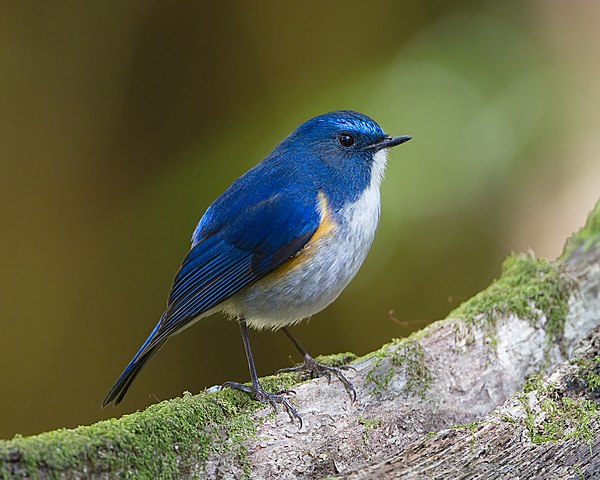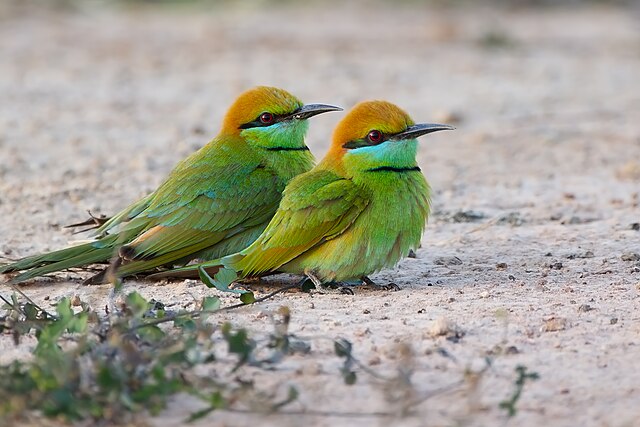
Thammasat University students are cordially invited to participate in a free Zoom public lecture on How can academics help tomorrow’s voters and today’s journalists engage with biodiversity?
The event will be held on Wednesday, 20 October starting at 4pm Bangkok time.
It is hosted by the School of Geography and the Environment, the University of Oxford, the United Kingdom.
Students may register at this link:
https://bookwhen.com/oxfordbiodiversitynetwork/e/ev-sojw-20211020100000
For further information or with any questions, please write to this email address:
biodiversity@ouce.ox.ac.uk
The Thammasat University Library collection includes many books about different aspects of biodiversity.
Biodiversity is the biological variety of life on Earth. It involves the evolutionary, ecological, and cultural processes that sustain life.
The speaker will be Kim Polgreen, Youth Educator in Residence, Wytham Woods, University of Oxford. Wytham Woods is an ancient semi-natural woodland, which has been owned and maintained by the University of Oxford since 1942. As its website notes,
Its 1000 acres are a designated Site of Special Scientific Interest and are one of the most researched pieces of woodland in the world, exceptionally rich in flora and fauna, with over 500 species of plants, a wealth of woodland habitats, and 800 species of butterflies and moths.
The event announcement explains:
Schools are always keen to have academics come and talk to their students, but if you get the call, what do you talk about and how do you pitch it? We keep hearing that today’s teenagers are out of touch with nature, so how can you convey your very detailed biodiversity research project to an audience with very little prior knowledge? I’d argue that you don’t. Step away from your research and become an advocate for learning about the natural world. Tell them your back story – what got you hooked on nature? What path did you go down to get where you are? What fun do you have when doing your research? What have you found out that is new and why is it important? What are your hopes for your and their futures? Don’t show more than one graph, kick out the jargon, put up some photos of you in wellies, up a tree, with a beastie, with other researchers. Entice them into your world.
In this session I will invite a couple of teachers and students to give you some advice on what they want to hear, and give you the opportunity to pitch a story. Come with one photo, or an object, a passion, a fear, or a funny story, and give them a tantalising glimpse into your world.
It will be hosted by Dr. Cécile Girardin, School of Geography, University of Oxford and Carlyn Samuel, research coordinator for EJ. Milner-Gulland’s Interdisciplinary Centre for Conservation Science, University of Oxford.

Thailand and biodiversity
There has been extensive research on biodiversity in the Kingdom. As the United Nations Convention on Biological Diversity website observes,
Thailand is one of the most biodiversity-rich countries in Southeast Asia. It is located within two major biogeographical regions – the Indochinese region in the north and the Sundiac region in the south. With 15 mountain ranges throughout the country, the watersheds and main river basins connected to the Mekong River, Gulf of Thailand and Andaman Sea form a juncture of distribution for various plant species, such as temperate plant species and sub-alpine flora species from China and the Himalayas, tropical plant species from Indo-China and tropical species from other parts of Asia. In consequence, this area is one of the most biodiverse in the world. Thailand contains around 15,000 plant species, representing 8% of the world’s total. Forest area covers at least 33% of the country’s total area, with at least 18% comprised of conserved forests.
Threatened species in Thailand are numerous, consisting of 121 mammals, 184 birds, 33 reptiles, 5 amphibians, 218 fishes and no fewer than 1,131 plants. For instance, the number of wild elephants is between 1975 and 2380, wild buffaloes remain between 50 and 70, tigers between 200 and 500, while guars and bantengs remain at around 200. The kouprey, eld’s deer and java rhino have not been reported in the wild for a long time. The number of irrawaddy dolphins is plummeting as well. Some freshwater fish species have become extinct and there are more than 20 endangered species. The number of indigenous livestock is also decreasing due to the introduction of alien animals.
Thailand’s unique biodiversity is supported by a large variety of ecosystems, landscapes and habitats, most of which are also greatly threatened by human activity. In 1961, Thailand had a lush forest covering 53.35% of the country however, in 2009, terrestrial forest coverage had decreased to 32.1%. Several wild plant species have been irretrievably lost, including some species indigenous to the Toe Daeng peat swamp forest. Furthermore, hundreds of thousands of wild orchids were poached between 2003 and 2005 and sold to orchid farms and collectors. The agricultural ecosystem in Thailand harbors a rich diversity of species. The country is a sanctuary for world rice species. However, at the moment, there is rapid genetic erosion of rice due to urban rice paddy cultivation and farmers preferring to grow prolific species (with less conservation of indigenous crops). A large number of indigenous cultivated plants have also disappeared following the destruction of farmed areas as a result of natural disasters, urbanization, industrialization and dam construction.
Thailand possesses unique coastal and marine biodiversity. Along the coastline, mangrove forests comprise approximately 36% of the coastline. Currently, mangrove forests are threatened by illegal wood cutting, shrimp farming, construction of residential areas and industrial factories. Beach forests have been heavily devastated due to tourism, community settlement and port activities. At present, only a few lush beach forests exist in Thailand, most of which are located in the national marine parks. A survey undertaken in 2006 revealed that 40% of the seagrass bed in the Gulf of Thailand was in good condition, while this figure was only 20% in the Andaman Sea. These decreasing trends are a result of erosion by the current flow, net fishing and trawling, shrimp farm sewage and residues from estuaries. The largest area of coral reefs, equivalent to 25% of the total coral reef area nationwide, is located in the Suratthani Province. A survey conducted in 2007 indicated that only 5% of coral reefs in the Suratthani Province is considered in good condition, 24% in fair condition, 52% in poor condition and 13% in very poor condition.
Thailand derives large benefits from ecosystems. In particular, the country recognizes the important environmental role performed by watersheds, river basins and coastal areas, as well as their significance in supporting livelihoods linked to fisheries, recreation and tourism, among many others. For instance, a watershed with adequate forest cover provides water that supports lowland agriculture, sustains the supply of surface and ground water for domestic use, and prevents soil erosion and the siltation of coasts and water bodies. Likewise, the forest ecosystem provides ecological services that benefit agriculture, industries, water and power needs…
Threats to biodiversity in Thailand include illegal hunting, crop and forest burning, livestock overgrazing, forest clearance/illegal logging, destructive fishing practices, disturbance caused by tourism and transportation activities, environmental pollution, forest fires, introduction of invasive alien species, coral bleaching and the loss of wetlands. The threats to biodiversity differ from one ecosystem to another. In regard to forest ecosystems, the shrinking of habitats for local plants and animals due to urbanization has resulted in the loss of indigenous plant and animal species. Urban and industrial growth has led to a critical decrease in (and deterioration of) agricultural ecosystems. Coastal ecosystems are threatened by illegal logging, overfishing, community settlement, industrialization and tourism development. Biodiversity ecosystems located near tourist attractions are threatened by rubbish, pollution, boat anchors and the collection of seashell and ornamental fish. In the past decade, overfishing and the deconstruction of coastal habitats, such as the mangrove forest, have reduced the quantity of marine animals available from natural sources. Notably, the amount of shell fished in the past ten years has declined by 70%. As a result, most of the large marine fish, such as shark, sawfish and ray, are now vulnerable.
Other studies are available from the Office of Natural Resources and Environmental Policy and Planning (ONEP); and the United Nations Development Programme (UNDP), which also published a Summary of the Thailand’s 6th National Report on the Implementation of the Convention on Biological Diversity (2020).

(All images courtesy of Wikimedia Commons)
